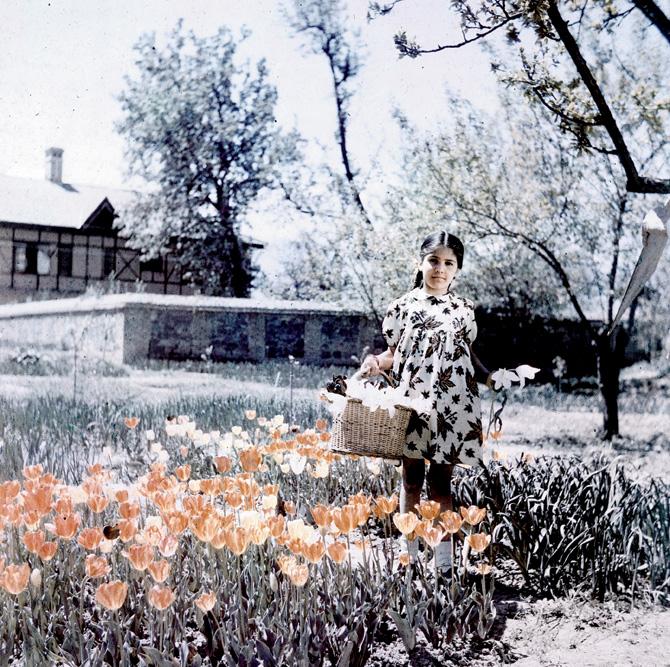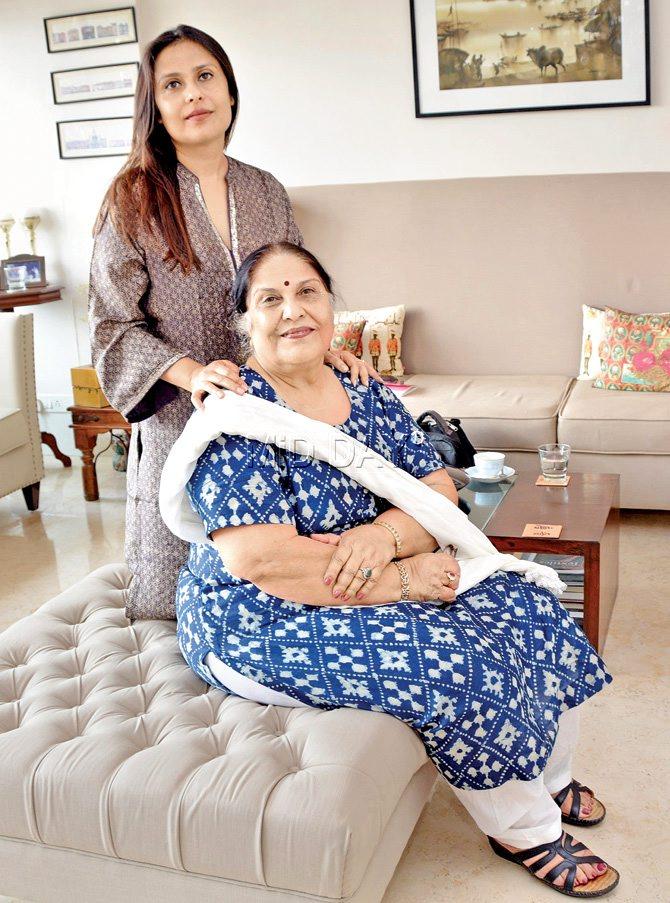Kiran Narain and her daughter, noted conservation architect Abha Narain Lambah, on leaving home

The book, says 72-year-old Kiran Narain (seated), is the written version of storytelling sessions with Abha Lambahu00c3u00a2u00c2u0080u00c2u0099s daughter
ADVERTISEMENT
The practice in Kashmir, when enquiring about how many sons you have, is to do so by biting your lips, so that your words come out garbled. The evil eye is kept at bay this way, it is believed. On the other hand, the question — how many girls? — flows freely, with no malformed lips or muffled words to mask your query. That you have a daughter, or seven in the case of Kiran Narain’s father, is bad enough.

Kiran Narain, aged 10 here, spent her childhood in Srinagar, after her family moved from Baramulla in 1947
For Abha Narain Lambah, Narain’s elder daughter and one of the country’s foremost conservation architects, growing up with six aunts meant being endlessly pampered with phirni and spicy marchawangan, spilling secrets to them when you couldn’t confide in your mother, and falling into their arms the minute you met them. It meant spending summers in Srinagar, where all the ladies would descend, in a home pervaded by the smell of women. “Apart from my mother, I had six mother figures. It felt warm and secure to know that they were there,” says Mumbai-based Lambah.

The book, says 72-year-old Kiran Narain (seated), is the written version of storytelling sessions with Abha Lambah’s daughter. PIC/Sayed sameer Abedi
Kiran Narain, née Kohli, is the author of a new book titled Kashmir: The Loss Of Innocence, in which she traces the individual lives of the Kohli sisters, and their gradual estrangement from Kashmir. The memoir begins with an elaborate family tree and is interspersed with vintage photos of the siblings (with adorable pet names like Gulli and Pinni), their parents, and the men they married, all among the picturesque bounty of Kashmir. The narrative is a familiar one — what once was is no more — and the book is a swifter version of Little Women, set against the turmoil of Kashmir, rather than the American Civil War. In 336 pages, seven women go from being tulip-picking lasses to disillusioned wives or widows.
The book, says 72-year-old Narain (who is called Ginni by her family), is the written version of storytelling sessions with Lambah’s daughter, Ambika. Hearing the tales of Kashmir in the 1960s and 70s, right from the charka-spinning of pashmina to Baramulla’s mixed society, Ambika, now 13, urged her grandmother to think of writing it all down. “I lacked the confidence you need to write a book in the beginning,” says Narain, who worked as a lecturer at the Government College for Women, Srinagar, “but I grew into it.” “My daughter didn’t know what a chinar tree was for the longest time. Family stories are important if you wish to know about your roots. And what it was to grow up in the company of strong women,” Lambah chimes in.
But Narain’s authorship is more than just chinars and cherry trees. “Kashmir was unusually liberal about getting women educated, and not just those from privileged backgrounds. From the 50s to the 80s, it was very safe. You could walk alone on the roads; there were petty crimes, but nothing too big, and people were respectful,” she recollects.
Noticing how bright she was, Narain was offered a place at Srinagar’s Amar Singh College to study BA History Honours by its principal. She was the only girl to be admitted in the boys’ college and, feeling “a bit like a goldfish in a bowl”, she writes, “I spent my free time in a ‘girl’s room’ in the attic above the college library where no one was allowed to come. However, looking at things, today, I give full credit to the well-behaved and disciplined boys who never once crossed the barriers of decorum. Only once in a while would a group of boys, in the lawns, sing a popular Bombay film song or whistle.”
The men in Narain’s life, her father and husband, “encouraged her to live life on her own terms”. It also meant extending a similar independence to her daughter, who, instead of pursuing a high-ranking government job like her father, chose to study architecture, a decision that met with disapproval from Narain initially. (“Devastated” is how Lambah describes her mother’s reaction).
Her concern for her daughter was well-intentioned; Lambah, now 45, was one of the few women architects in the country when she set up her firm 18 years ago. She recalls a time when she had to restore a statue at a height of 170 feet on a heritage building in Mumbai. “A male officer kept dismissing me, saying, ‘Well, you can climb and check it out.’ He thought I wouldn’t dare scale the bamboo scaffolding to reach the statue. When I did climb 17 storeys on the rickety scaffolding, he stood corrected,” she laughs. “My mother’s generation had to make many breakthroughs. Unfortunately, we have regressed as a society,” she adds.
But Kashmir is forgetful of its daughters. Kashmiri women who marry non-state men, as six of the Kohli sisters have, are refused a share of immovable property in the state. Narain believes she lives in exile — a girl given away. Lambah, the talent behind several award-winning conservation projects, says, “I have worked in almost every Indian state — Tamil Nadu, Karnataka, Rajasthan — you name it. Except Kashmir. I have not got the chance to restore Nishat and Shalimar Bagh or Shankaracharya Temple in Srinagar. You are left with an awful feeling of alienation.”
 Subscribe today by clicking the link and stay updated with the latest news!" Click here!
Subscribe today by clicking the link and stay updated with the latest news!" Click here!







